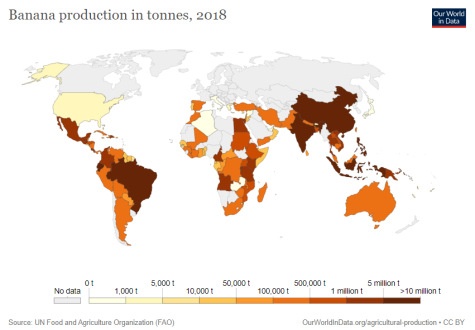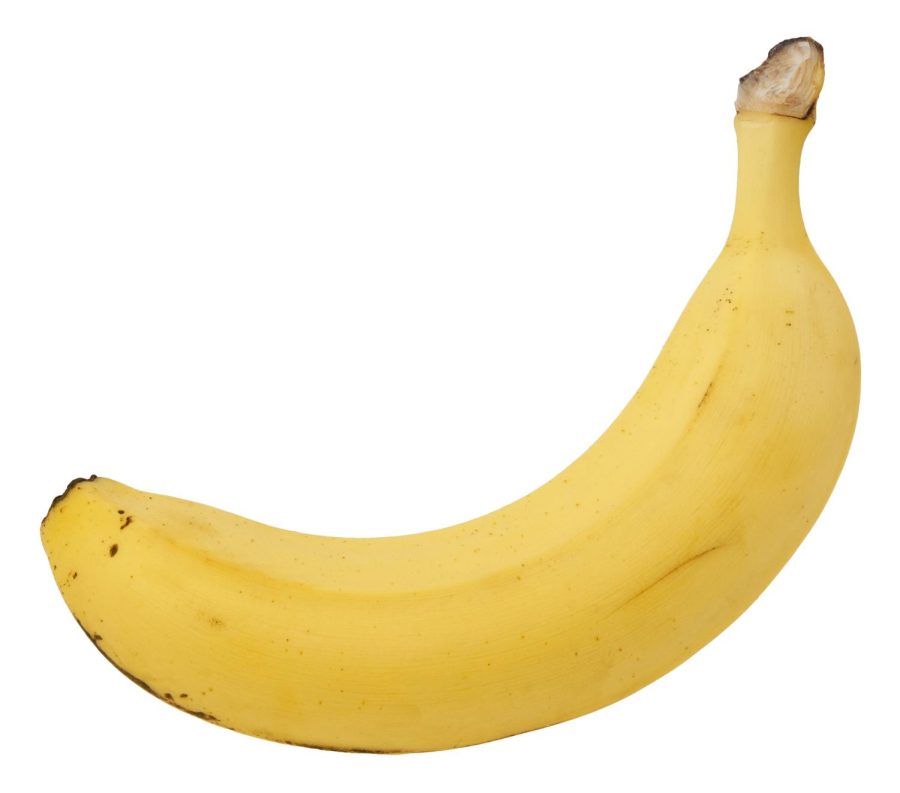Beginning of the Broad Banana Banishment
March 28, 2022
The banana as we know it may become extinct within a decade because they, just like humans and most species on Earth, are vulnerable to diseases. Cows, apes, fish, and any other life forms on this planet are susceptible to some form of sickness, and plants are no exception. Plant diseases impair the plant, steal its nutrients, and hijack the plant’s functions – usually resulting in the death of the plant.
Plant microbes are often more difficult to combat than human diseases, as human epidemics can easily be countered if people make a conscious choice to take preventative actions – such as isolating, washing their hands, and wearing masks. Trees cannot wear a mask. With a plant-based pathogen, a speck of dust is enough to contaminate an entire field of crop. Because of this, the Cavendish (the banana most commonly seen at stores) variety of banana that we all know and love may become extinct within the next decade.
Panama Disease, a fungus also called Banana Wilt, was first recorded in 1997 in Northern Australia. The fungus is a vascular-wilt disease, meaning that it feeds off of the vascular (water transport) system of the plant. The banana’s natural response is to cut off its own water supply, suffocating itself, and then it sheds its contaminated leaves into the dirt and onto other plants.
Similar to human diseases, different crop diseases are spread through different mediums; Panama Disease also contaminates other plants through particles. Airborne human diseases are spread through spit molecules leaving the mouth and nose, but Panama disease is also advanced through mediums, mostly being dust and dirt. If a plant gets infected with the disease then the soil around the plant is also infected. Wind and human interference causes the soil and dust to spread; an entire field can be contaminated within an afternoon.

Banana production in tonnes worldwide
If the banana extinction does happen, then the people who will suffer most are not the consumers, but rather the suppliers. The banana industry currently employs around 300,000 workers in total. Nearly a third of a million people are reliant on the banana plant, so if the Cavendish goes extinct, what will happen to these workers?
Fortunately, Business Economics teacher Doug Gryboski believes that the workers may recover and possibly thrive in the event of a broad banana banishment: “Those farmers who produced bananas will obviously be harmed as they no longer get a revenue from bananas. … These farmers would turn to the next best alternative with their time and with their land. If they found growing kiwis on their land (just an example) was the next most profitable activity they could do, then they would grow kiwis (and maybe it is because there is more demand for kiwis now that more consumers are eating them). So, any country whose ‘economy was reliant on the banana’ is not really the country, but rather a large portion of the workers/farmers in that country. Likewise they (workers/farmers of the country) will end up producing other products which are most profitable to them.”
Within the next decade, the yellow Cavendish banana that is sold in every grocery store in the United States will balance on the brink of extinction due to this fungus. Thankfully, if the banana does go the way of the dodo bird, humans will find a new source of potassium in other foods such as avocados, kiwis, or even other banana types; like the red banana which tastes like the cavendish but with a hint of raspberry.


